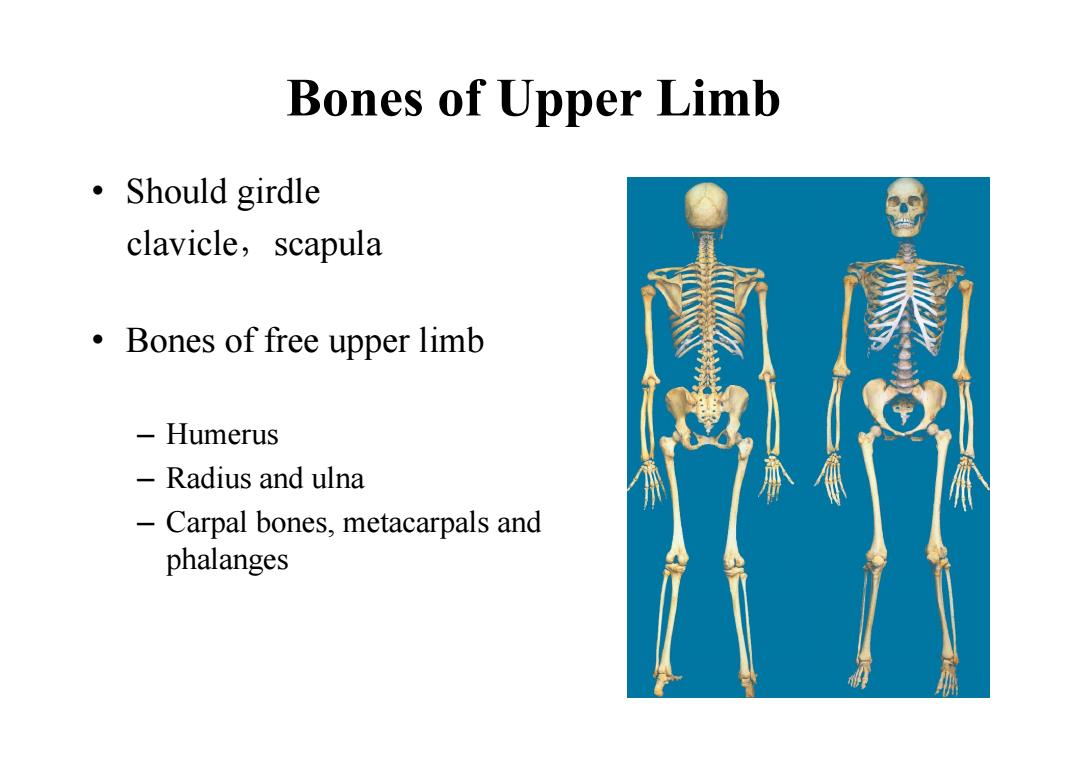
Bones of Upper Limb ·Should girdle clavicle,scapula Bones of free upper limb -Humerus Radius and ulna Carpal bones,metacarpals and phalanges
Bones of Upper Limb • Should girdle clavicle,scapula • Bones of free upper limb – Humerus – Radius and ulna – Carpal bones, metacarpals and phalanges
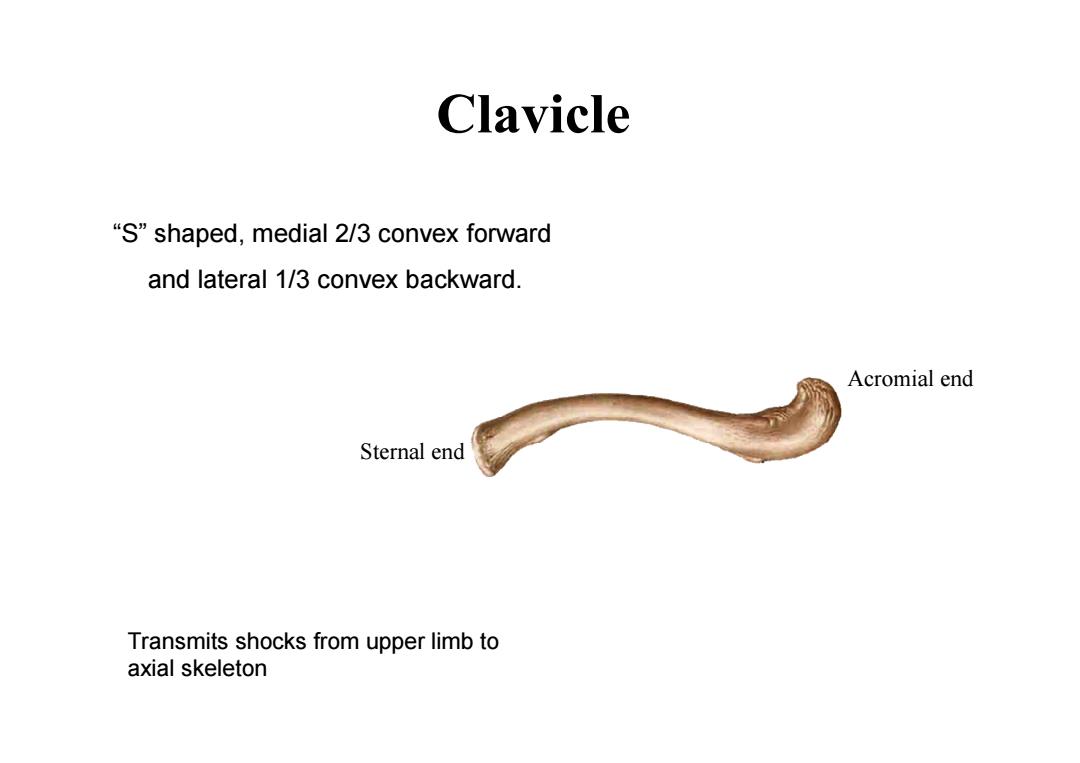
Clavicle “S”shaped,medial23 convex forward and lateral 1/3 convex backward. Acromial end Sternal end Transmits shocks from upper limb to axial skeleton
Clavicle “S” shaped, medial 2/3 convex forward and lateral 1/3 convex backward. Sternal end Acromial end Transmits shocks from upper limb to axial skeleton
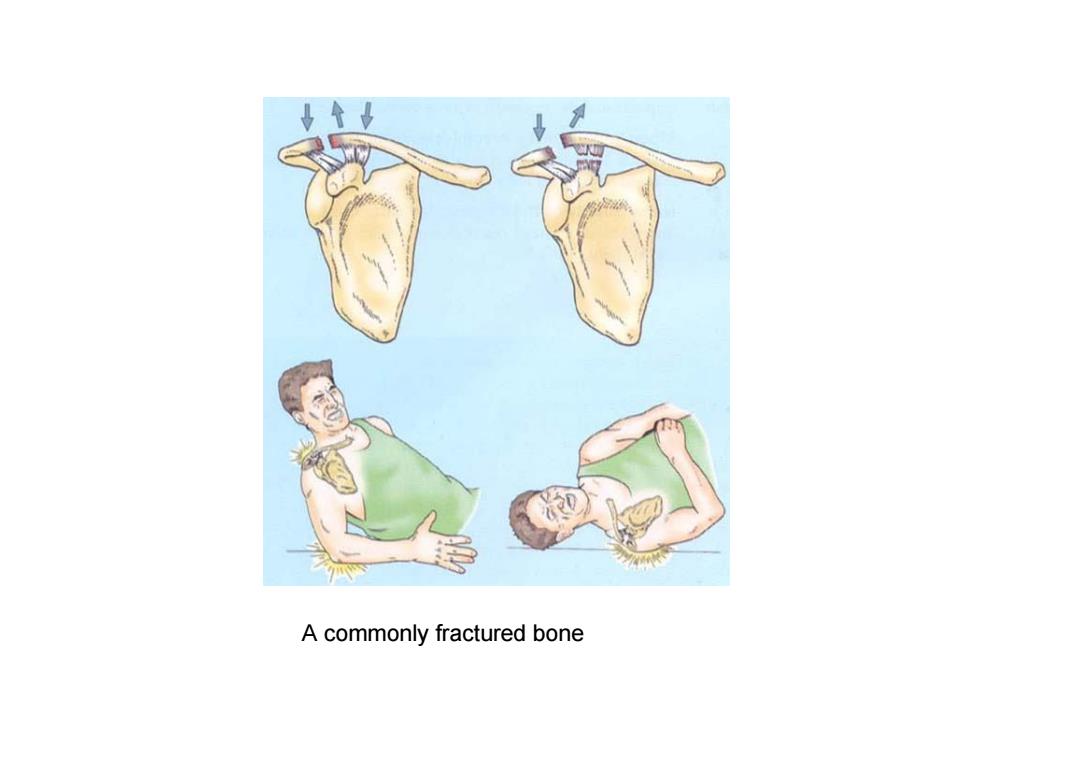
A commonly fractured bone
A commonly fractured bone
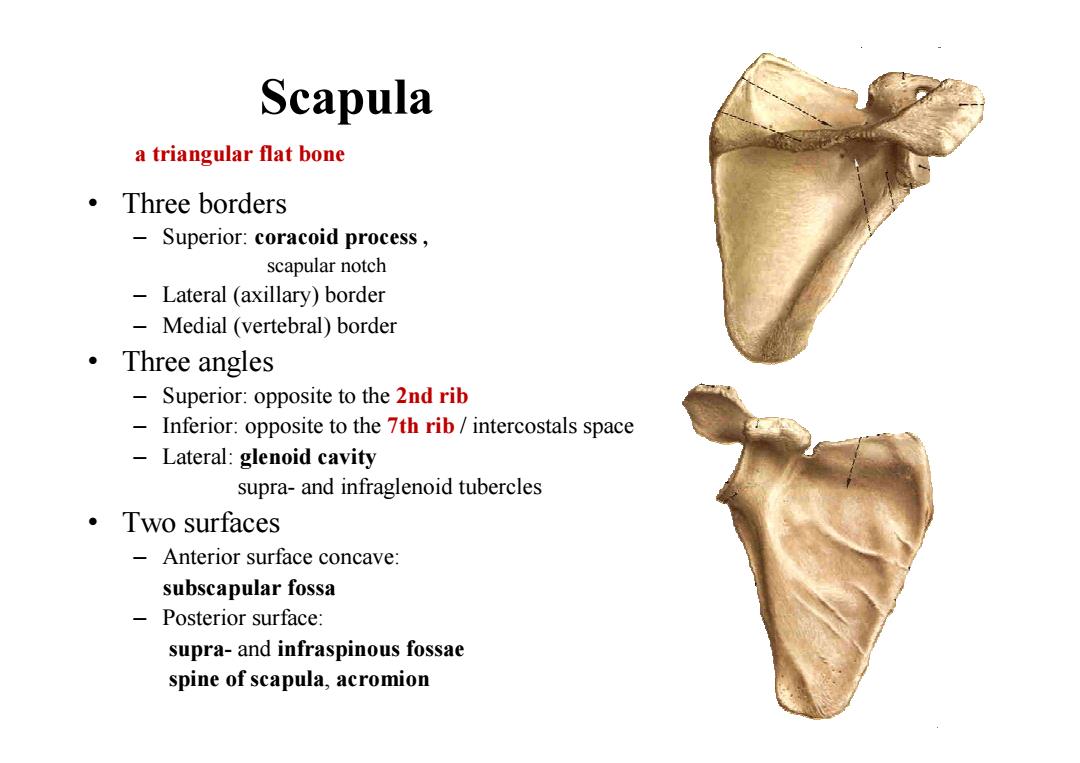
Scapula a triangular flat bone ·Three borders Superior:coracoid process, scapular notch Lateral (axillary)border Medial (vertebral)border ·Three angles Superior:opposite to the 2nd rib -Inferior:opposite to the 7th rib/intercostals space Lateral:glenoid cavity supra-and infraglenoid tubercles ·Two surfaces Anterior surface concave: subscapular fossa -Posterior surface: supra-and infraspinous fossae spine of scapula,acromion
Scapula • Three borders – Superior: coracoid process , scapular notch – Lateral (axillary) border – Medial (vertebral) border • Three angles – Superior: opposite to the 2nd rib – Inferior: opposite to the 7th rib / intercostals space – Lateral: glenoid cavity supra- and infraglenoid tubercles • Two surfaces – Anterior surface concave: subscapular fossa – Posterior surface: supra- and infraspinous fossae spine of scapula, acromion a triangular flat bone
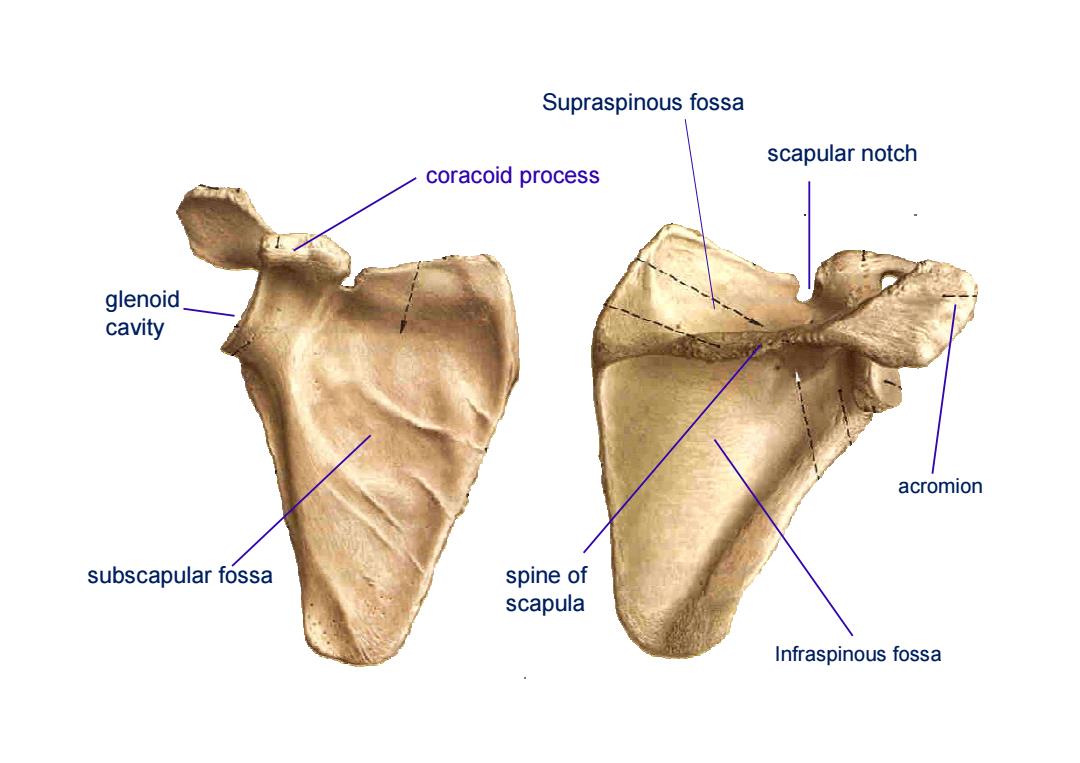
Supraspinous fossa scapular notch coracoid process glenoid cavity acromion subscapular fossa spine of scapula Infraspinous fossa
coracoid process glenoid cavity spine of scapula acromion scapular notch Supraspinous fossa subscapular fossa Infraspinous fossa